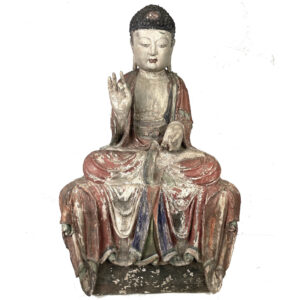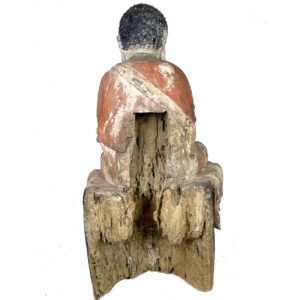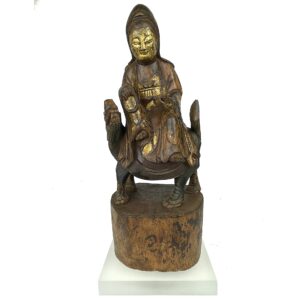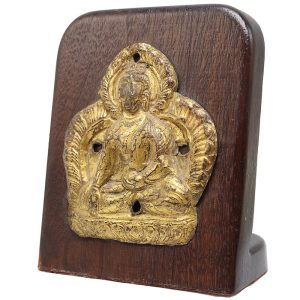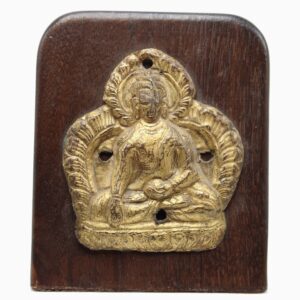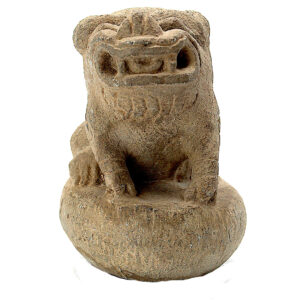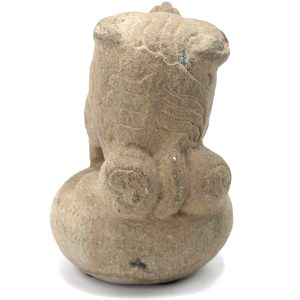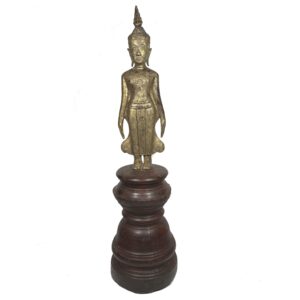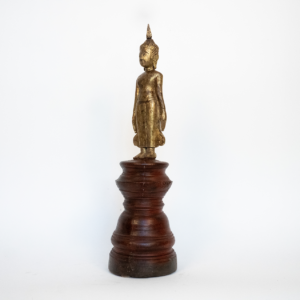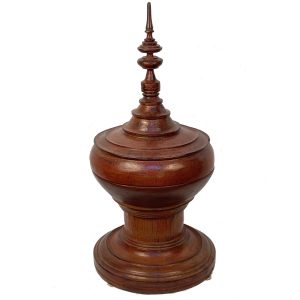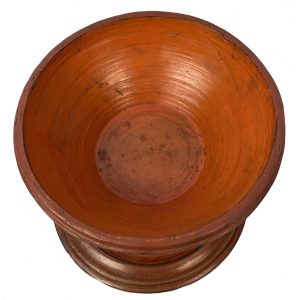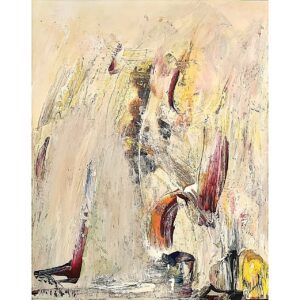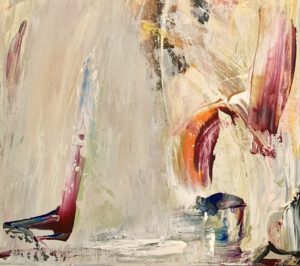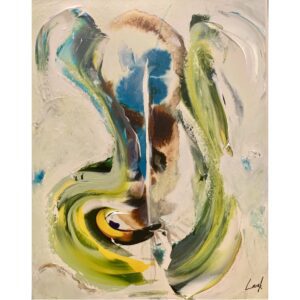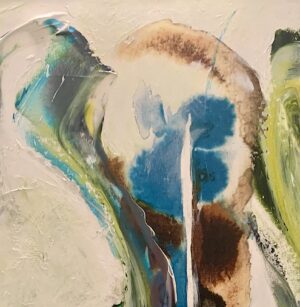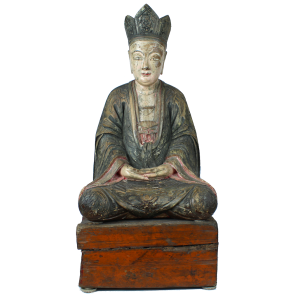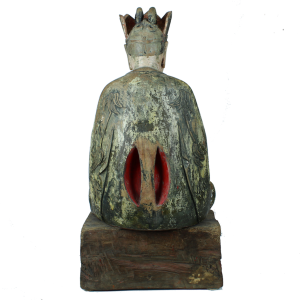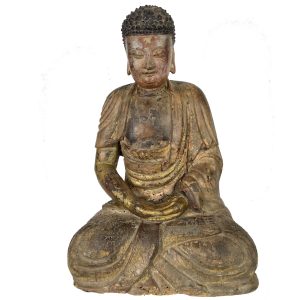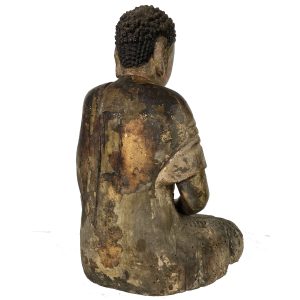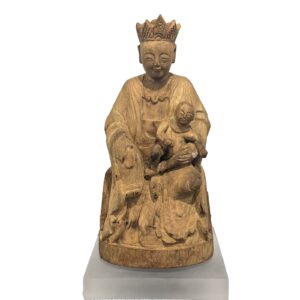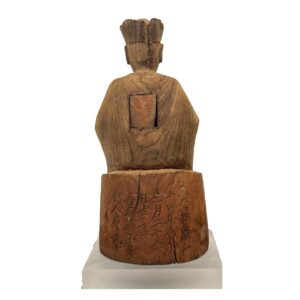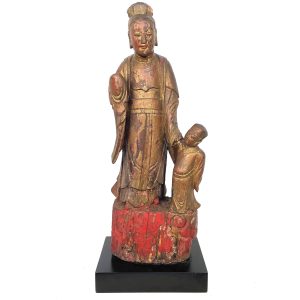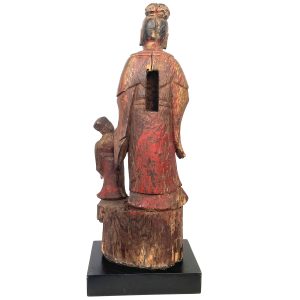Showing 13–24 of 40 results
-
Sale!


$4,500.00 Original price was: $4,500.00.$3,300.00Current price is: $3,300.00.
H: 30″ W: 18″ D: 10″ | | CALL 213-568-3030 OR EMAIL [email protected] FOR SHIPPING.
Superb, colorful and rare Buddha in teaching (vitarka) mudra appears to float above swirling cloud. Fine features, graceful body and exquisitely rendered drapery make this a truly striking statue. Given its size and masterful carving, it should be revered commensurate with its spirituality and artistry.
-
Sale!


$725.00 Original price was: $725.00.$585.00Current price is: $585.00.
H: 15.125” W: 6” D: 5” | FREE SHIPPING within Continental U.S.
Rare provincial carving of Guanyin in lalitsana clasping a rosary on a mythical Hǒu that symbolizes righteousness, morality and ushers in peace and prosperity. Small yet powerful, consecrated and mounted on Acrylic base.
-
Sale!


$595.00 Original price was: $595.00.$495.00Current price is: $495.00.
with stand H: 5″ W: 4.6″ D: 4″ | FREE SHIPPING WITHIN CONTINENTAL U.S.
Tibetan repoussé of Shakyamuni Buddha in Earth Witnessing mudra within a trefoil arch on a lotus base.
-
Sale!


$195.00 Original price was: $195.00.$155.00Current price is: $155.00.
H: 4.5″ Dia: 3.25″ | FREE SHIPPING WITHIN CONTINENTAL U.S.
This stone flu lion is not an elegant protective beast, it’s just a friendly pet hanging out. He probably lived in a garden and is looking for another one with people like old wonderful pieces to remind them not to take themselves too seriously.
-


$1,575.00
H: 24.5” Dia: 7″ | CALL 213-568-3030 FOR SHIPPING quote or email [email protected]
Lao carved Buddha statues are renowned for their delicacy and refinement. This elegant antique Buddha is depicted in the “Calling for Rain” mudra found only in Laos with his half-closed gazing downward in meditation, elegant gestures, lyrical flaring robes and graceful curves of the body reflecting the Buddha’s gentleness. The curvature, proportions and oversized head indicate the perfection, wisdom and compassion of the “Enlightened One. He stands on a multi-tiered circular and waisted base. Carved Laotian images as old and elegant as this are rare.
-
Sale!


$725.00 Original price was: $725.00.$525.00Current price is: $525.00.
H: 26″ Dia: 12.5″|CALL 213-568-3030 OR EMAIL [email protected] for shipping.
This elegant early 20th century red lacquer hsun-ok has a simple striking silhouette with raised circular layers on a pedestal base and woven vertical bands topped by a tall round finial resembling a Buddhist stupa.
-


$975.00
H: 17″ W: 13″ | CALL 213-568-3030 OR EMAIL [email protected] FOR SHIPPING.
Framed Acrylic Painting
This is one of a pair of “Buddha in Bliss” paintings by Lark Pilinsky, celebrating the energetic spirit and joyous wisdom shared by the Buddha with all of humanity.
-


$975.00
H: 17″ W: 13″ | CALL 213-568-3030 OR EMAIL [email protected] FOR SHIPPING
Acrylic on Canvas
This is one of a pair of “Buddha in Bliss” paintings by Lark, celebrating the energetic spirit and joyous wisdom shared by the Buddha with all of humanity.
-
Sale!


$4,450.00 Original price was: $4,450.00.$3,500.00Current price is: $3,500.00.
Ht: 27.5” W:13.5: D: 10.25” | CALL 213-568-3030 FOR SHIPPING QUOTE OR EMAIL US AT [email protected]
Magnificent example of fine provincial Buddhist statues. Made to be seen in the round, her garment has delicate incised leaves and leaf motifs on front, back, and sleeves. High pointed crown with the Five Tantric Dhyani Buddhas, rare in provincial Guanyins.
-
Sale!


$3,200.00 Original price was: $3,200.00.$2,300.00Current price is: $2,300.00.
H: 14” W: 9.375” D: 7.25” | FOR SHIPPING INFORMATION CONTACT US AT 213-568-3030
Rare small yet majestic carving of the Buddha in meditation with gracefully draped robes and beautifully idealized features that radiates serenity, compassion and spirituality. A truly magnificent piece.
-
Sale!


$1,350.00 Original price was: $1,350.00.$1,100.00Current price is: $1,100.00.
H: 11” W: 5.75” D: 5.125” | FREE SHIPPING WITHIN CONTINENTAL U.S.
Very rare and fine 16th century home shrine image with compassionate countenance of Songzi Guanyin the “Bestower of Children.” With joyful half-closed eyes, she looks lovingly at the child whose arm is draped over hers.and leans slightly forward.Wearing a 5- lobed crown centered with a camellia flower a Chinese symbol of young sons and daughters. Inscription dates it to 1521-1567
-
Sale!


$2,250.00 Original price was: $2,250.00.$1,800.00Current price is: $1,800.00.
Ht: 26” W: 10.25” D: 7.5″ |CALL 213-568-3030 OR EMAIL [email protected] FOR SHIPPING
Rare provincial image of Guanyin tenderly holding a young child’s hand similar to Songzi “Child-Giving Guanyin”. Consecrated with vibrant gilt and red surface in front and back.
End of content
End of content

